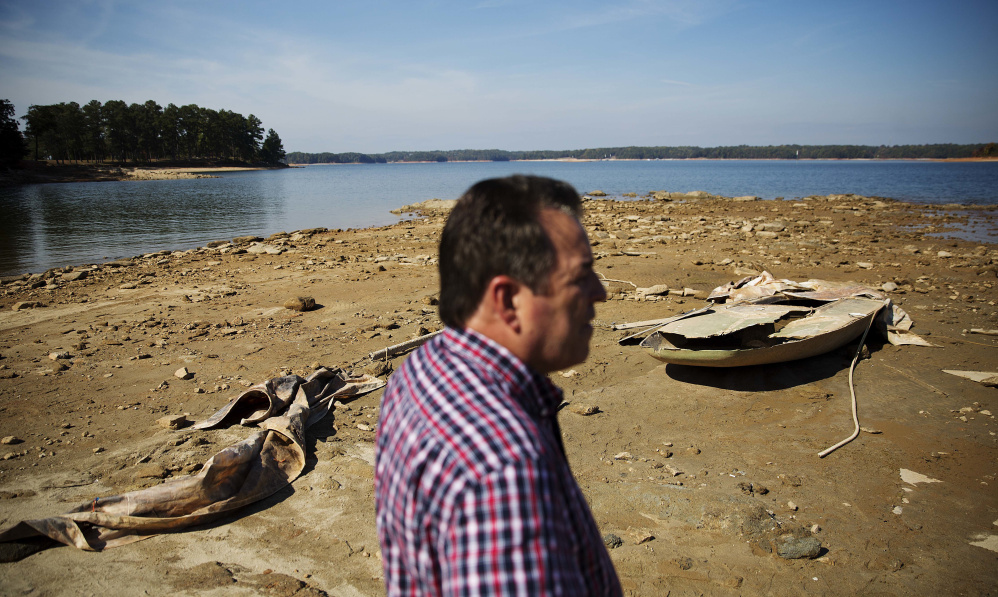ATLANTA — Beaver dams have been demolished, burbling fountains silenced, and the drinking water in one southern town has taken on the light brownish color of sweet tea.
Though water shortages have yet to drastically change most people’s lifestyles, southerners are beginning to realize that they’ll need to save their drinking supplies with no end in sight to an eight-month drought.
Already, watering lawns and washing cars is restricted in some parts of the South, and more severe water limits loom if long-range forecasts of below-normal rain hold true through the rest of 2016.
The drought arrived without warning in Chris Benson’s bathroom last week in Griffin, Georgia.
“My son noticed it when he went to take his bath for the evening,” said Benson, 43. “The water was kind of a light brown color and after we ran it for a while, it actually looked like a light-colored tea. A little disturbing.”
The problem was that Griffin’s reservoir is nearly 8 feet below normal, leaving “a high level of manganese” in the remaining water, but not making it unsafe, city officials told residents in a Nov. 16 “water discoloration update.”
Benson watched that water turn from brown to “kind of a light green tint” before clearing up, he said.
It’s no better in Tennessee, where about 300 of the state’s 480 water systems serve areas suffering moderate to exceptional drought, the Tennessee Emergency Management Agency said.
Across the South, communities relying on depleted watersheds can’t afford to waste what they’ve got left, said Denise Gutzmer at the National Drought Mitigation Center in Lincoln, Nebraska.
“For some of these small communities, they are in trouble and they will need to be very careful about their water use to conserve,” Gutzmer said.
Gutzmer collects the most granular consequences of the nation’s weather for the Drought Impact Reporter. She logged the complaints of a hay producer in Winchester, Tennessee, whose spring has run dry “for the first time in over a hundred years,” and the rescue of 64 endangered Barrens Topminnows, one of the world’s last remaining wild populations, from a drying stream in Coffee County, Tennessee.
She also tracked a mass mussel die-off due to low water in southwestern Virginia, and described how hundreds of volunteers removed beer bottles and car parts from the bottom of Alabama’s Lake Purdy, which has 20 feet of water, three-fourths of its capacity. She even heard how workers dismantled beaver dams to increase water flow in west Georgia’s Tallapoosa River.
“That really underscores the desperation of the situation, like ‘OK, we’ve got to clear the beaver dams,’ ” Gutzmer said.
Villa Rica’s public works director, Peter Zorbanos, has been working mightily to keep water flowing through the system after the surface of Lake Fashion dropped below an intake pipe. The Georgia town may soon have to rely on its lowest intake pipe, near the lake’s murky depths.
Send questions/comments to the editors.



Comments are no longer available on this story